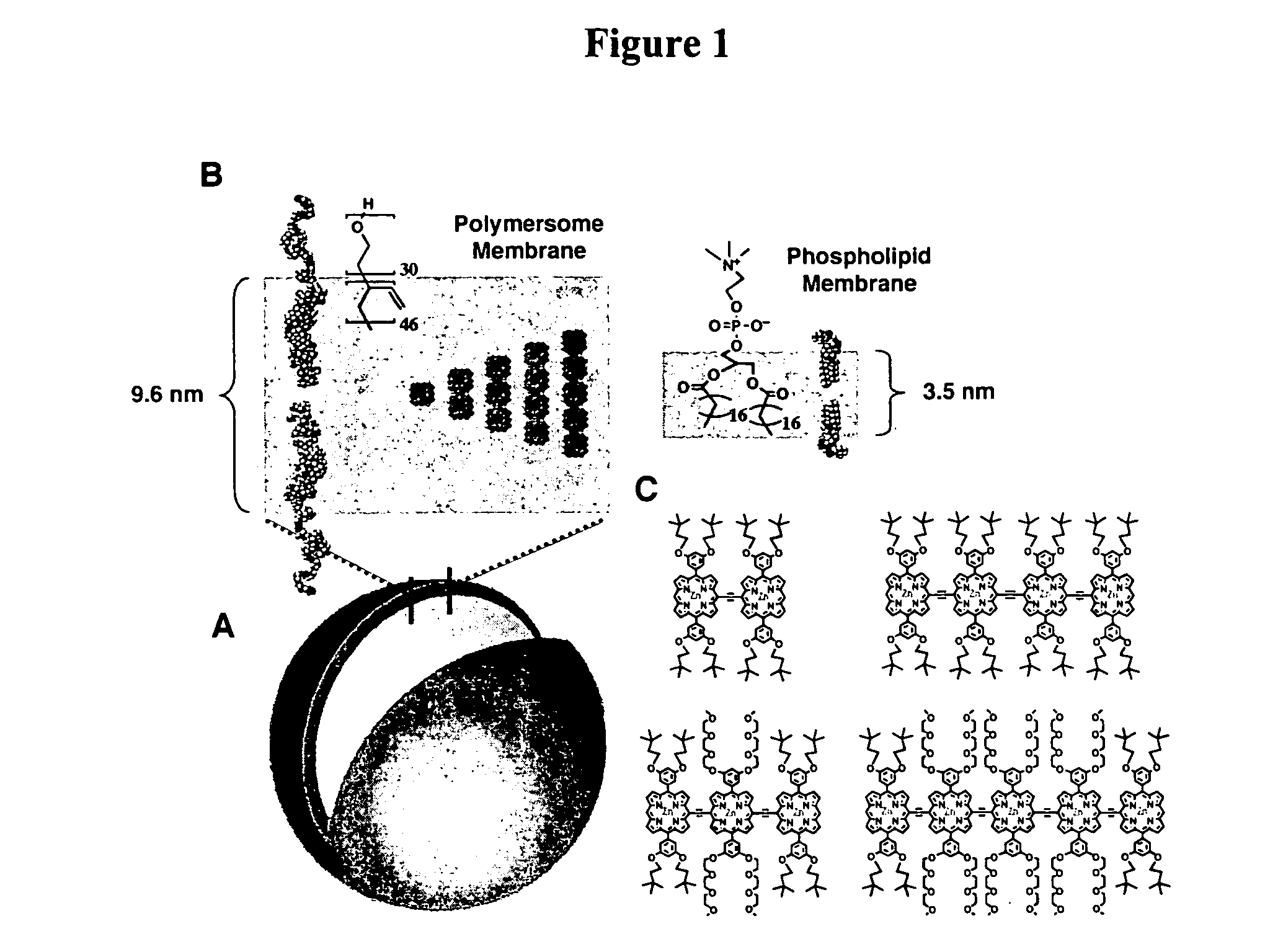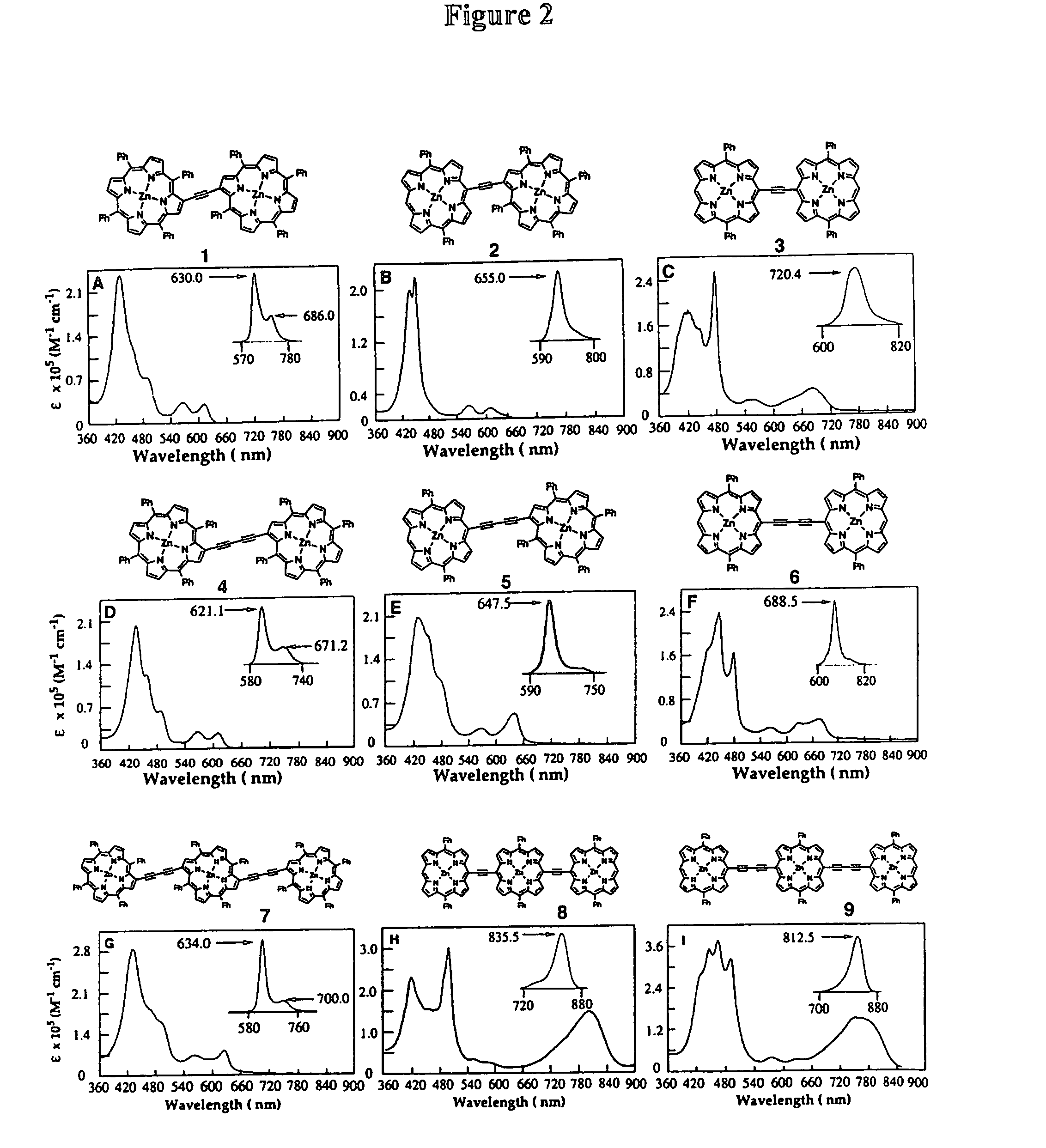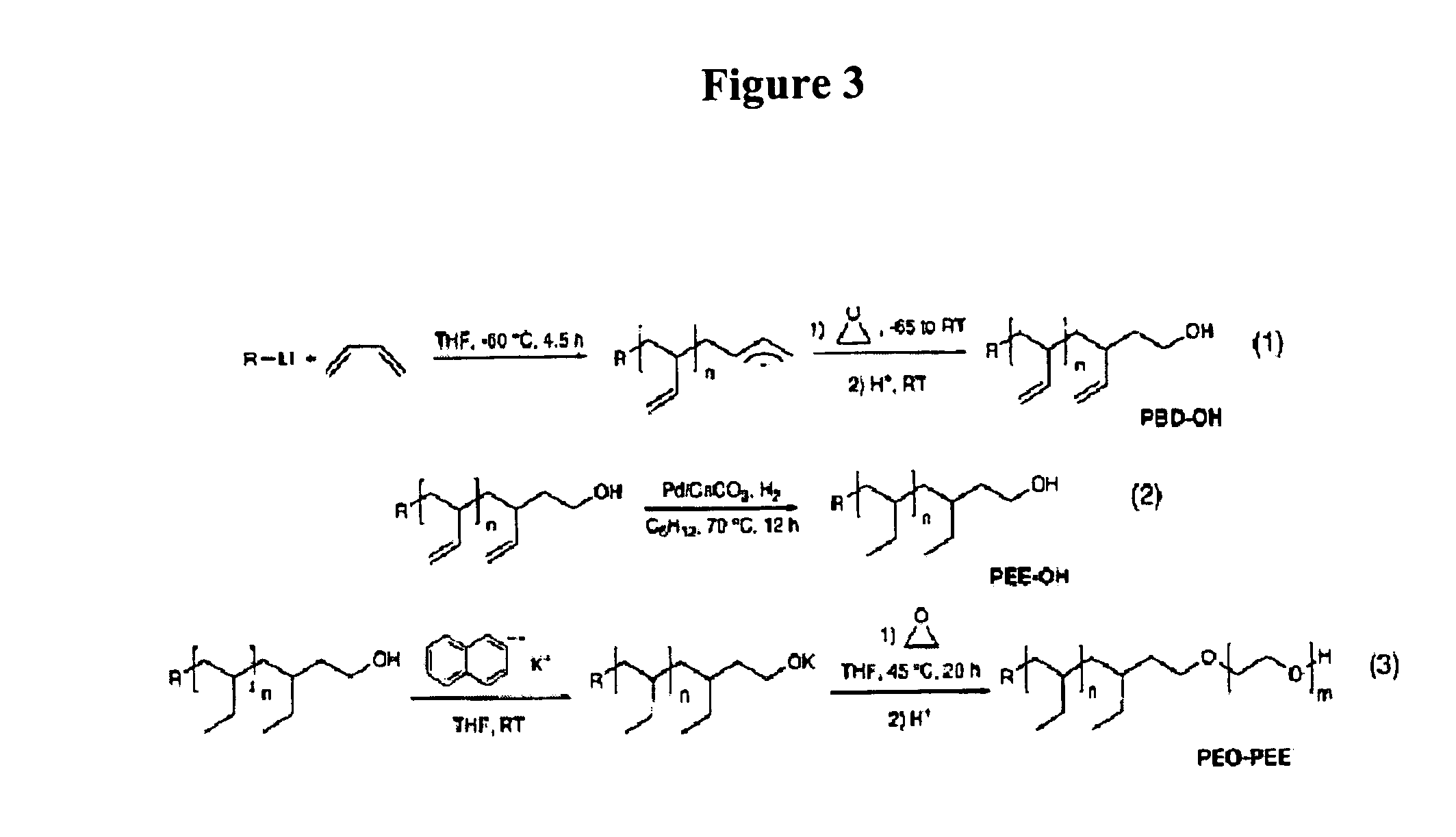Polymersomes incorporating highly emissive probes
a polymersome and probe technology, applied in the field of polymersomes incorporating highly emissive probes, can solve the problem of significant limitations in the utility of sub-millimeter tissue depths
- Summary
- Abstract
- Description
- Claims
- Application Information
AI Technical Summary
Benefits of technology
Problems solved by technology
Method used
Image
Examples
example 1
OE7 Synthesis
[0153]OE7, polyethylene oxide-polyethylethylene (EO40-EE37, number average molecular weight, Mn, of about 3900 g / mol, volume fraction of EO=0.398, a polydispersity measure is given by Mw / Mn˜1.10) is synthesized and characterized by the methods of Hajduk D A, Kossuth M B, Hillmyer M A, Bates F S, J. Phys. Chem. B 102, 4269 (1998), H. E. Warriner, S. H. J. Idziak, N. L. Slack, P. Davidson, C. R. Safinya, Science 271, 969 (1996), M. A. Hillmyer and F. S. Bates, Macromolecules 29, 6994 (1996); and M. A. Hillmyer et al, Science 271: 976 (1996).
example 2
OB2 Synthesis
[0154]OB2, polyethylene oxide-polybutadiene (EO26-BD46, number average molecular weight, Mn, of about 3600 g / mol, volume fraction of EO=0.28) was synthesized by the methods of M. A. Hillmyer and F. S. Bates, Macromolecules 29, 6994 (1996).
example 3
OB18 Synthesis
[0155]OB18, polyethylene oxide-polybutadiene (EO80-BD125, number average molecular weight, Mn, of about 10,400 g / mol, volume fraction of EO=0.29) was synthesized by the methods of M. A. Hillmyer and F. S. Bates, Macromolecules 29, 6994 (1996).
PUM
| Property | Measurement | Unit |
|---|---|---|
| wavelength | aaaaa | aaaaa |
| diameters | aaaaa | aaaaa |
| wavelength | aaaaa | aaaaa |
Abstract
Description
Claims
Application Information
 Login to View More
Login to View More - R&D
- Intellectual Property
- Life Sciences
- Materials
- Tech Scout
- Unparalleled Data Quality
- Higher Quality Content
- 60% Fewer Hallucinations
Browse by: Latest US Patents, China's latest patents, Technical Efficacy Thesaurus, Application Domain, Technology Topic, Popular Technical Reports.
© 2025 PatSnap. All rights reserved.Legal|Privacy policy|Modern Slavery Act Transparency Statement|Sitemap|About US| Contact US: help@patsnap.com



